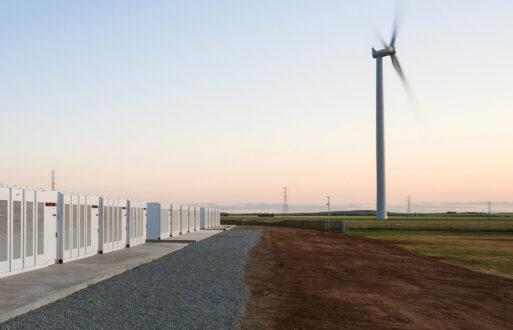Decentralization.
The transformation from fossil fuel-based, centralized power supply to renewably resourced, decentralized energy distribution is one of the primary factors impacting future GENCO resource mix decisions.
Long-term resource planning by asset owners, even in a time of disruptive technological change and rapidly evolving utility business models, is still an important exercise and will require more agile approaches to address increasing uncertainty and volatility.
GENCOs face more and more “short-fuse” decisions in portfolio planning as the old world of creating a ten-year Integrated Resource Plan (IRP) and waiting another five to seven years to analyze and discuss it is long gone. Planners must be more nimble and attentive to the considerations of a growing list of new and diverse stakeholders.
Five Factors
This fifth post in our seven-part blog series, “7 Habits of Highly Effective GENCOs”, will examine five key considerations associated with portfolio resource planning in ISO/RTO-controlled markets that require UCED modeling.
1. The Evolving Role of State PUCs: Who’s Calling the Shots?
For several decades, GENCOs enjoyed almost complete autonomy in the IRP process. Not so much anymore, as state PUCs are actively monitoring the changing energy landscape and exercising more authority in GENCO planning. Witness the Colorado PUC announcement that the Tri-State Generation & Transmission Association will now be required to submit its resource plan for Commission approval.

GENCOs are accepting a new planning reality whereby state legislatures seek to define processes, scope, stakeholder engagement, and more.
Last year, the Arizona PUC rejected the IRP of Tucson Electric Power Company (TEP), its sister utility UniSource Energy Services (UNS), and Arizona Public Service Co (APS) and ordered them to shift dependence on natural gas-fired generation to renewable power and Energy Storage Resources (ESRs). Arizona is not an outlier. In fact, more PUCs view more aggressive renewable energy standards as foundational to the overall planning process and will press for their inclusion from the start.
2. Deploying Utility-Scale Batteries
In PCI’s blog post, “Battery Storage Is Crossing The Chasm Quickly,” we looked at the rapid ascent of Battery Energy Storage Systems (BESS), their associated challenges, opportunities, and impact on markets. How about their effect on long-term resource planning? Well, depending on the type of battery and the specific application, BESS often provides a better way to substitute generation and transmission planning, given their inherent “localization.”
While consideration of BESS alternatives is only in the first inning of the long-term forecasting ballgame, the April 2019 incident at Arizona Public Service’s McMicken storage facility demonstrates that optimal planning must strike a proper balance between rapid expansion and safety.
3. ISO/RTO Market Rule Changes
If you think resource mix planning is a huge challenge now, try putting yourself in the shoes of ISO/RTO staffers who are responsible for developing and refining market rules that must incorporate and level the playing field for new technologies such as BESS. While FERC Order 841 spelled out a clear directive in this area, it did not necessarily prescribe specific actions that should be implemented by market operators.
Energy markets develop rules in part by listening to stakeholders that oftentimes have competing interests. Changes like 5-minute LMP pricing should incent generation that can provide things like reg-up and reg-down ancillary services, and quick start resources will be encouraged to handle the intermittency of wind and solar resources.
FERC Order 825 (released June 2016) required each RTO/ISO to “…trigger shortage pricing for any interval in which a shortage of energy or operating reserves is indicated during the pricing of resources for that interval.” The enhancement of ramp products in markets will incentivize resources to provide (ramping) flexibility in order to integrate more renewable capacity in the future. This is a vitally important issue since the lack of adequate ramp is a significant contributor to high scarcity pricing events.

Market operators must listen to a diversifying and more vocal stakeholder community as they deploy new-generation technologies with promising but not fully quantified capabilities.
Market rules will change frequently during the next few years, and GENCO long-term planners will need to pay close attention to all short-term events as they seek to determine the optimal resource mix.
4. Changing Load Profiles
What will your load look like in five years?
The better question might be: What will your load look like next year?
Long-term resource planning requires strong confidence in what load profiles look like – even in the mid-term. Load profiling, which in the past was a relatively easy task, is anything but today due to the rapid advancement and adoption of disruptive generation technologies.

Consumers are becoming “prosumers,” markedly transforming load profiles in the process.
Forecasting behind the meter generation and behavior represents a big challenge for resource planners who have to answer some very complex questions such as:
- How quickly will residential load adopt electric vehicles?
- How quickly will residential load embrace solar and battery storage?
- When will commercial customers begin to self-generate/store energy?
Fortunately, digitalization will greatly aid load forecast processing and accuracy for GENCOs, who have to consider all of the likely load trend impacts as they strive to provide low-cost, reliable power in the most environmentally friendly fashion possible.
5. The Development of Microgrids
Energy resource decentralizing is being largely defined by developments in microgrid technologies that can:
- Disconnect from the traditional grid to operate autonomously;
- Increase the efficiency of electricity delivery by reducing T&D losses;
- Help mitigate grid disturbances;
- Assist in increasing the integration of renewable energy resources
The proliferation of Community Choice Aggregations (CCAs) during the past five years is an extension of microgrid development and adoption. Communities are now playing a significant role in determining the future GENCO energy mix and, further, are empowered to secure their own generation outside of the traditional local utility framework.
Meeting Long-Term Planning Challenges
To be sure, the five elements outlined above challenge regional approaches to meeting statewide energy demand and notably complicate long-term planning. They also have the capacity to increase the potential for devastating bottom-line impacts by stranding expensive generating assets.
However, GENCOs can confidently predict where they need to be across various time horizons, even when faced with short-term challenges to long-term strategic plans. To achieve success, GENCOs must:
- Evaluate scenarios, identify likely future outcomes, and build agility into their plans. Comprehensive, forward-looking scenarios that establish ranges of combined possibilities help accurately determine what future demand is and how the resource mix should be appropriately structured.
- Look well ahead, anticipate RTO/ISO market changes, and be as nimble as possible in responding to them. The complexity of planning for the long-term demands predictively assessing how the market is trending and how it’s likely to evolve with “future states” influencers such as enhanced ancillary services, battery storage systems, and others penetrating the business decision-making process.
Finally, decentralization is a sea change that will mandate. GENCOs leverage the incredible functionality and capability now engineered into portfolio optimization and planning software tools like PCI’s industry-standard GenTrader platform.






